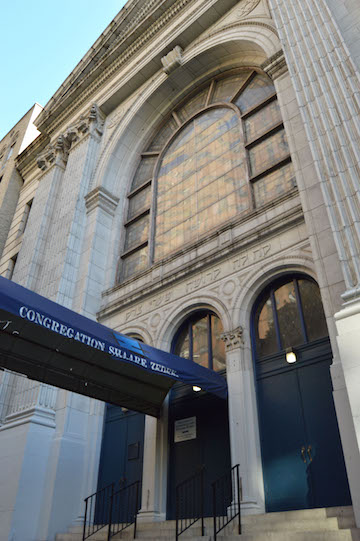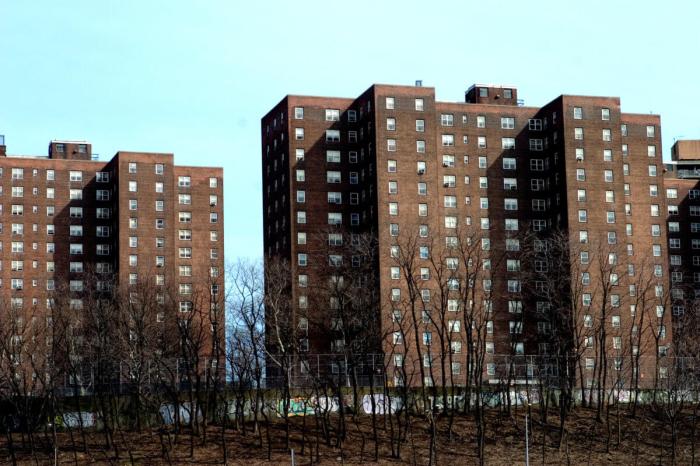
BY JACKSON CHEN | Another Upper West Side historic religious site in Manhattan may fall to developers, even as distressed neighbors are trying to raise awareness and seek advice regarding their options when faced with plans to demolish a synagogue on West 93rd Street to make way for a 14-story mixed-use building.
According to a letter received by neighbors of Congregation Shaare Zedek in April from an unnamed developer, plans are underway to tear down the synagogue, which was dedicated in 1923. The building would then be replaced by an as-of-right mixed-use development containing a new three-story house of worship and condo units on the upper 11 top floors. Since the synagogue space would be considered a “community facility,” the developers are given more allowance for a bigger building within zoning regulations.
Ronna Blaser, a neighbor of Congregation Shaare Zedek, said after receiving the unexpected notice, a group of concerned residents banded together to form the West Nineties Neighborhood Coalition to forge opposition to the project.
“We were really upset because the building was built in 1922,” Blaser said. “It’s a beautiful, solid neoclassical structure that fits perfectly in the block and it just seemed like it always should be there.”
Landmark West!, an Upper West Side preservation organization, noted that Shaare Zedek, in its current space now for nearly a century, is the third oldest congregation in New York City.
According to Sean Khorsandi, the organization’s advocacy director, the synagogue unfortunately falls within a “landmarks desert,” which has few designated properties in the immediate vicinity and is outside the boundaries of two nearby historic districts, the Upper West Side-Central Park West and Riverside-West End Historic Districts.
Khorsandi said Shaare Zedek was the most recent of many synagogues that “may be easy targets for developers” because of the common financial struggles faced by religious institutions and the legal allowances for larger replacement structures if they include a community facility.
The Jewish Telegraph Agency, an international news service, reported back in May that the synagogue was looking to “embark on its own construction project, which will see its 1923 building demolished to make way for a 14-story construction,” including a three-story synagogue and condo units.
For Blaser and likeminded neighbors, there is unhappiness about the vague information provided them in the April letter they received.
“There’s really no communication between the developer and us,” Blaser said. “The only time they communicate is if they want to come into the building for engineering things.”
After some research, the coalition discovered Scott Leyton and his Long Island-based company, Ornstein Leyton Company, were the developers behind the project.
Blaser and Julie Jacobs, another members of the new coalition, approached Community Board 7 for advice in preserving what they feel is a precious part of their neighborhood.
Since no plans have been filed with the city’s Department of Buildings, the property was not an agenda item for CB7, but board members agreed to hear the concerns as a preemptive look into the project. Given the lack of plans, however, CB7 could only advise that the coalition reach out to any overseeing bodies to which the synagogue reports in seeking a positive outcome for their concerns.
According to Jacobs, the coalition has also reached out to local elected officials, including Borough President Gale Brewer, State Assemblymember Linda Rosenthal, and City Councilmember Helen Rosenthal. Councilmember Rosenthal, Jacobs said, was able to guide coalition members through the governmental process the synagogue would most likely face.
Rosenthal said she would be keeping an eye on the project, but acknowledged that given its as-of-right nature, the neighbors have only limited “ability to have formal grounds for getting involved.”
The Upper West Side has at least two other controversial development projects under consideration on the site of religious institutions –– the conversion of a 1903 church building into residential use at 96th Street and Central Park West and the construction of a nine-story building by a synagogue on property it owns adjacent to its historic temple at CPW and 70th Street.
Rosenthal said the sharp eye that developers are keeping on historic buildings is a symptom of how tight the real estate market on the Upper West Side currently is.
“It’s a reflection of the market and how valuable people are finding their property,” Rosenthal said. “I think property owners are looking to monetize their property, the market is hot, and that’s what they’re going to do.”
She added that many religious institutions struggle financially, particularly those housed in old buildings that can often face burdensome repairs. Community fundraising to support such congregations can sometimes aid in preservation efforts, but that is a lofty and often ultimately unachievable goal when expensive renovation becomes necessary.
From the perspective of Landmark West!, the incentives given developers in building community facilities on sites formerly home to historic congregations pose a hazard to their preservation.
“For us, the greater thing would be a better look citywide at the community facility provision and who uses it,” Khorsandi said. “There are a lot of gray areas and unanswered questions in the rules.”
Blaser agreed that the current system is not working to the advantage of those hoping to preserve the Upper West Side’s historic character, and that residents have no choice but to speak up.
“If this would happen once or twice it would be a coincidence,” Blaser said. “But it’s happening so much in the neighborhood, we feel if we don’t voice our concerns, there are going to be all these beautiful buildings becoming high rises and we’ll really lose the fabric of our neighborhood.”
The developer, Ornstein Leyton Company, and the synagogue could not be reached for comment.

















